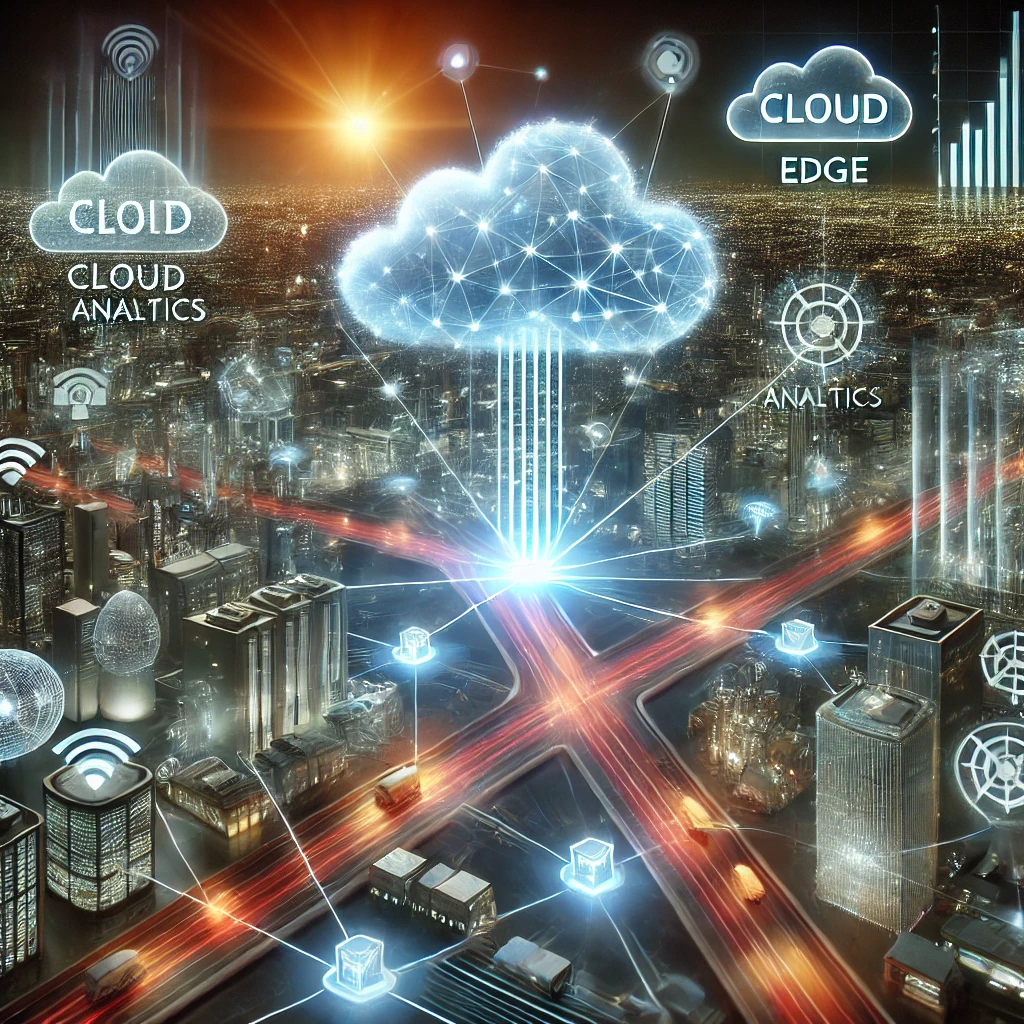Introduction
In the era of rapid digital transformation, data has become the backbone of modern technology. With the explosion of connected devices, cloud computing, and artificial intelligence, the demand for faster and more efficient data processing has skyrocketed. This is where Edge Computing steps in, offering a revolutionary approach to managing and processing data closer to its source.
Edge computing reduces latency, enhances security, optimizes bandwidth, and enables real-time decision-making across industries. In this article, we will explore the fundamentals of edge computing, how it works, its benefits, real-world applications, challenges, and what the future holds for this transformative technology.
What is Edge Computing?
Edge computing is a decentralized computing paradigm that processes data closer to where it is generated rather than relying solely on centralized cloud servers. It enables devices, sensors, and local servers to handle computations independently, reducing reliance on distant data centers.
Key Features of Edge Computing:
- Proximity to Data Sources – Computing happens near IoT devices, sensors, and users.
- Low Latency – Reduces data transfer time for real-time decision-making.
- Bandwidth Optimization – Limits data transmission to the cloud, reducing network congestion.
- Enhanced Security & Privacy – Keeps sensitive data closer to its origin, minimizing exposure.
- Scalability – Supports massive IoT ecosystems without overwhelming centralized networks.
How Edge Computing Works
Edge computing moves processing and storage capabilities closer to data sources, enabling real-time data analysis and minimizing delays. The process involves three main components:
1. Edge Devices
These include IoT devices, sensors, and mobile gadgets that generate and process data locally. Examples include smart cameras, industrial robots, and autonomous vehicles.
2. Edge Nodes or Edge Servers
These are intermediary computing units located near edge devices. They handle initial processing, filter data, and send only relevant information to cloud servers. Examples include on-premise servers in factories and 5G base stations.
3. Cloud Data Centers
Only crucial, large-scale data is sent to cloud infrastructure for further analysis, storage, and coordination with other systems.
By distributing computing power across edge nodes rather than relying on a central cloud, edge computing ensures faster responses, better efficiency, and lower operational costs.
Benefits of Edge Computing
1. Reduced Latency
Edge computing eliminates delays caused by sending data back and forth to cloud servers. This is crucial for time-sensitive applications like autonomous vehicles and medical devices.
2. Improved Reliability
With edge computing, devices can function independently even when disconnected from the cloud, ensuring uninterrupted operations in remote locations or during network failures.
3. Bandwidth Efficiency
Instead of sending vast amounts of raw data to the cloud, edge computing processes data locally, reducing bandwidth consumption and minimizing costs.
4. Enhanced Security and Privacy
Sensitive data stays within local systems, reducing the risk of cyberattacks and unauthorized access, making it ideal for financial, healthcare, and government applications.
5. Scalability for IoT Growth
With billions of IoT devices being deployed, edge computing helps manage massive data loads, ensuring smooth performance across smart cities, industries, and retail sectors.
Real-World Applications of Edge Computing
1. Autonomous Vehicles and Transportation
Edge computing enables self-driving cars to process sensor data instantly, improving navigation, object detection, and traffic management.
2. Healthcare and Medical Technology
- AI-powered diagnostics using edge devices for faster patient monitoring.
- Smart wearables analyzing health metrics in real-time.
- Remote robotic surgeries powered by low-latency processing.
3. Industrial Automation (Industry 4.0)
Factories and manufacturing plants use edge computing for predictive maintenance, robotics automation, and process optimization to reduce downtime and improve efficiency.
4. Smart Cities and Infrastructure
- Traffic lights adjusting in real-time based on vehicle movement.
- Smart grids optimizing energy distribution and consumption.
- Surveillance systems detecting threats and anomalies instantly.
5. Retail and Customer Experience
Retailers use edge computing to:
- Track inventory with RFID tags.
- Personalize customer experiences with AI-powered insights.
- Manage cashier-less stores like Amazon Go.
6. Agriculture and Smart Farming
- Drones analyzing crop health in real-time.
- Smart irrigation systems optimizing water usage.
- Livestock monitoring using AI and edge sensors.
7. 5G and Telecommunications
Edge computing enhances 5G networks by processing data at base stations, reducing latency for applications like virtual reality (VR), augmented reality (AR), and real-time gaming.
Challenges in Implementing Edge Computing
1. Security Risks
While edge computing enhances security by keeping data local, edge nodes can become potential attack points, requiring strong cybersecurity measures.
2. Complexity in Deployment and Management
Managing a distributed edge infrastructure requires specialized expertise and automation tools.
3. High Initial Costs
Investing in edge devices, local servers, and AI-powered analytics can be expensive, particularly for small businesses.
4. Data Silos and Interoperability
Different edge computing solutions may lack standardization, causing challenges in data sharing across platforms and vendors.
The Future of Edge Computing
Edge computing is poised to transform data processing through advancements in:
1. AI and Machine Learning at the Edge
More AI-powered edge devices will self-learn, adapt, and optimize processes without human intervention.
2. Edge-Cloud Hybrid Models
Enterprises will adopt hybrid architectures, where cloud and edge computing work in synergy for enhanced performance and scalability.
3. Blockchain for Edge Security
Blockchain-based authentication and encryption will secure edge devices and transactions, ensuring trust and data integrity.
4. Quantum Computing at the Edge
Future edge systems may integrate quantum computing capabilities, revolutionizing real-time processing in finance, cybersecurity, and scientific research.
5. Green and Sustainable Edge Computing
New energy-efficient edge devices will use renewable energy, reducing carbon footprints while maintaining high performance.
Conclusion
Edge computing is reshaping the way we process and analyze data by bringing computing power closer to the source. With its ability to reduce latency, enhance security, and optimize bandwidth, it is unlocking new opportunities across industries, from autonomous vehicles to smart cities and healthcare.
As AI, 5G, and IoT continue to evolve, edge computing will become a core pillar of the digital economy, enabling faster, smarter, and more sustainable solutions. Businesses and organizations that adopt edge computing early will gain a competitive advantage, driving innovation in an increasingly data-driven world.
The future is at the edge, and the possibilities are limitless.
Also Read:
AI Is Moving Out of the Data Center. How Nvidia Wants to Keep Its Edge.









+ There are no comments
Add yours